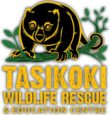 Tulap is located in North Sulawesi about an hour’s drive south from Tasikoki Wildlife Rescue Centre, and also one hour from the Masarang Foundation headquarters in the city of Tomohon. It is the gateway to a 3km stretch of beach, mana
Tulap is located in North Sulawesi about an hour’s drive south from Tasikoki Wildlife Rescue Centre, and also one hour from the Masarang Foundation headquarters in the city of Tomohon. It is the gateway to a 3km stretch of beach, mana
This beach is of high conservation value because it is a nesting site for all five of the species of sea turtles that are native to the region. The tropical calm waters and associated beach morphology make it possible for the various species to nest across half the year, with at least 2-3 turtles laying eggs most nights (most sea turtles nest under the cover of darkness). The species include: Loggerheads (IUCN Endangered, 1996), Leatherbacks (IUCN Critically Endangered 2000), Green Sea Turtles (IUCN Endangered 2004), Olive-ridleys (IUCN Vulnerable, 2008), and Hawksbills (IUCN Critically Endangered 2008). Sea turtles form an integral part of our marine ecosystem and are currently threatened with extinction due to a variety of human impacts.ged as a protected sea turtle nesting area by the Masarang Foundation since April 2011.
This project has the unique opportunity to boost global sea turtle populations from a small beach in North Sulawesi. Visitors will not see turtles held captive in tanks or have any opportunity to touch turtles, as our programme is focussed on increasing wild populations that already suffer too much human disturbance. If patient for a night safari, there may be chance to witness hatchlings emerging from the nest and going to sea. It may even be possible to witness turtles nesting during the season which runs from March-September, but this is often difficult as the presence of visitors can deter the turtles from coming to shore.
Please note the project is not generally open to visitors after dark (turtles are not active on shore during daylight), and only where there is a qualified guide available to ensure minimum impact to the natural cycle of the sea turtles.
Visitors will be able to learn more about the sea turtle ecology, including demonstration of their nesting behaviour and explanation of their life cycle, as well as gain understanding as to the threats they face.
